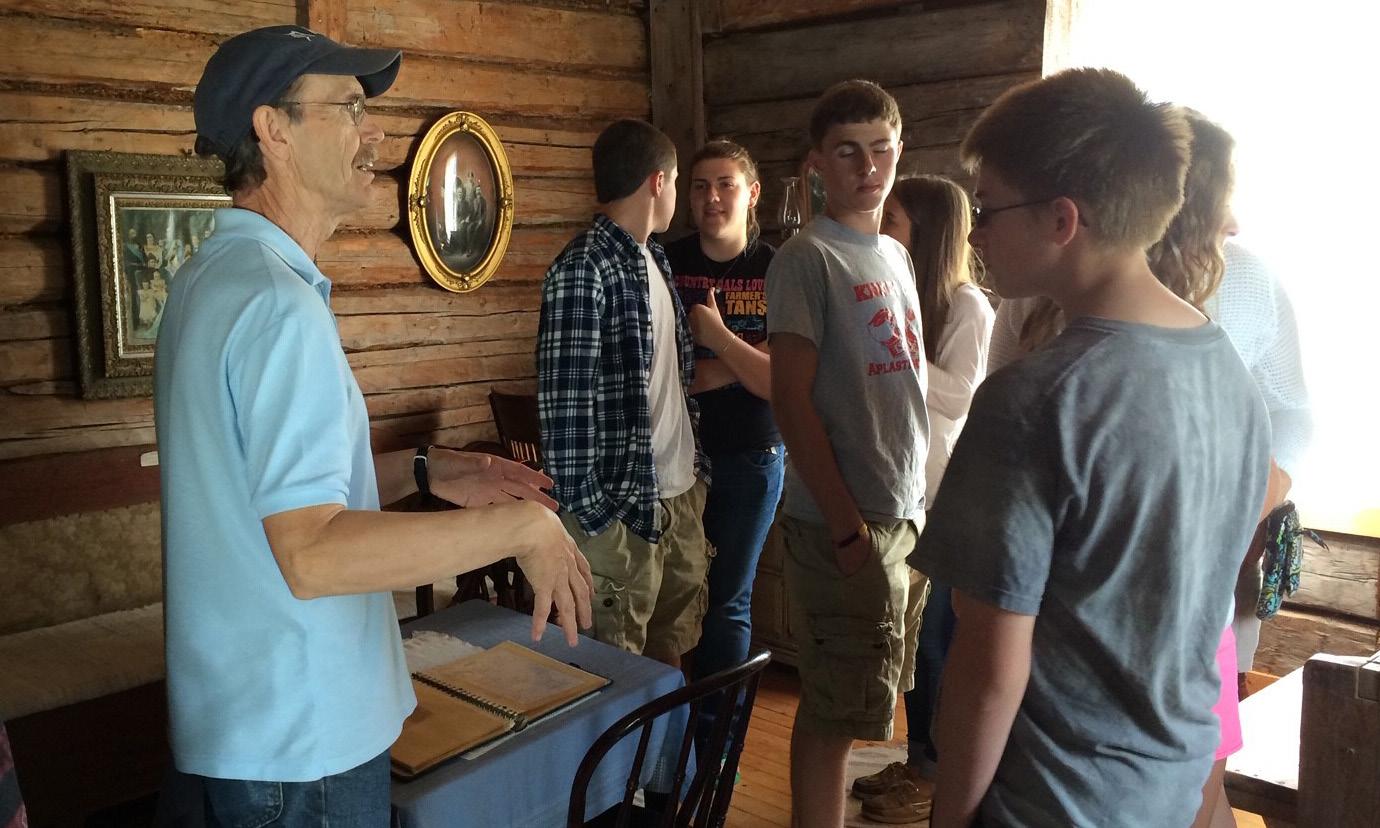
6 minute read
Tech Talk
THREE APPS TO SUPPORT
STUDENTS WITH SPECIAL NEEDS This article originally appeared on Achieve the Core, in partnership with Student Achievement Partners and later on NEAToday.org.

The following app suggestions are compiled by Dr. Bryan R. Drost the Director of Curriculum and Instruction for the ESC of Summit County. He holds a Bachelor of Arts in Spanish Education from Hiram College, a Master’s of Education in Educational Foundations with an emphasis in Standards-Based instruction, as well as a Ph.D. in Curriculum and Instruction with an emphasis in assessment from Kent State University. Here are his recommendations, in his own words.

The last of my recommended apps is really one that can be used in all disciplines, and isn’t limited to math or ELA. As students progress into higher and higher grade levels or as content gets more and more challenging, it is essential to help students see the relationships between ideas. Often, students with special needs, who have difficulty with organizing information, need support in keeping ideas and these relationships straight. Ideament is a great application that allows you to draw a diagram—a mini map, concept map, flow chart, etc.—and convert it to a text outline, and vice versa. This is a great way to help students with special needs organize information for something that they need to write. It can also be used in relationship to the text itself. For example, copying and pasting a portion of text into a Word document will allow the software to create a diagram of the text to help students organize this text and make sense of the relationships amongst ideas, perhaps say, in a science text. Students also have the option of manipulating these diagrams to reorganize them in ways that are uniquely suited for how they learn to process the information.
Desmos

Often, students with special needs who are struggling in math need some type of visual to represent mathematical relationships. When this isn’t provided, these students will shut down and become frustrated. To be frank, many of us need those visuals. In addition to providing just such a visual, Desmos harnesses the social nature of online interactions into meaningful math inquiry. For example, by using the Function Carnival tool, students are given the freedom to experiment with functions and are given direct feedback that allows them to revise their thinking and improve their mathematical practices AND practice perseverance as they iterate and work their way to the correct solution. Lastly, and most powerfully, this tool gives teachers the ability to randomly pair students with electronic devices, allowing students to create questions and challenges for each other based on aligned content. This can help students with special needs as it provides a model for mathematical thinking. Check it out at https://teacher.desmos.com/.
TextTeaser One of the concerns with some special needs students is that they can’t read the complex text that is required of them at grade level. Research has consistently proven that we need to make sure kids get exposure and regular practice with grade-level text. Simply giving students texts that are not at their Lexile level is problematic, so what can teachers do to ensure access to complex texts for all readers? Try one of these free Google tools! Take an on-grade-level text, maybe from Newsela. Download the free TextTeaser Google Chrome extension (it’s available for other browsers as well—just do a quick web search). TextTeaser summarizes the content from a webpage as a list of sentences or in paragraph form. What’s really great is that you adjust the output using a slider to give different detail levels of the passage or article. An intervention specialist can work in a small group or one-on-one, helping the students make sense of the larger passage. The summary can be used to preview the text or as a refresher to allow students to access the content, main ideas, and vocabulary so that they can participate in those rich, on-grade-level conversations. An alternative to TextTeaser is SMMRY (https:// smmry.com/), a tool that performs basically the same task.
S T O R I E S
CELEBRATING MAINE

It’s Maine’s 200th anniversary of statehood. The bicentennial is an opportunity for educators to further allow students to learn and explore the wonders of this great state with special field trips and lessons. Here are some ways educators are celebrating the Pine Tree State in an educational and fun way.


THE SWEDISH COLONY IN NORTHERN MAINE
The Maine Wildlife Park is a favorite spot for students as they get the chance to explore and see first-hand the animals that roam Maine’s vast woods. In addition to touring the park and it’s more than 30 species of Maine wildlife, students learn from wildlife experts things like how do birds and mammals do their 'jobs' in the dark of night or why turtles have varied body shapes and appendages, how camouflage benefits those animals that exhibit it, and more! The hands-on experience also allows students the opportunity to learn about the Maine Wardens and how they help protect the wilderness. Students in Natasha Brewer’s Central Aroostook JR-SR High school visit the Maine Swedish Colony as part of the Maine history unit, learning about the Swedish Settlement in New Sweden. Students learn everything from how Swedish people came to Maine what types of tools and items they worked with in the 1800’s. “It’s a fascinating place!” says Brewer of the Colony and proves to be a great teaching tool for the students as well.
LORING HERITAGE MUSEUM

History comes to life for students at Fort Fairfield High School when they listen to the stories of Ray Hildebrand, a retired teacher and former USAF and National Guard member. Hildebrand conducts tours at the Loring Military Heritage Center, sharing his personal stories from his time serving as a bombardier on B52s stationed at the base. Each year, students in Social Studies teacher Garrett Martin’s U.S. History college prep class visit the heritage center while studying the Cold War, making for an interactive and interesting way to learn about our state and its military history.

SEEDS THEY SOW-POTATO HARVEST HERITAGE
Potatoes are northern Maine’s primary agriculture product and at one point, Maine potato production was among the highest in the nation. The history of the potato and its importance to our state is something schools in The County incorporate into their teaching and learning. Entire schools, like the Dawn Barnes Elementary School, visit local farms to learn about how potatoes are grown and harvested. Local farmers at the Clayton J. Roy Farms in Caswell share their expertise with students and teachers, like Brandy Brissette, who use the local resources to enrich her students’ learning about Maine and one of its greatest sources of economic prosperity.










